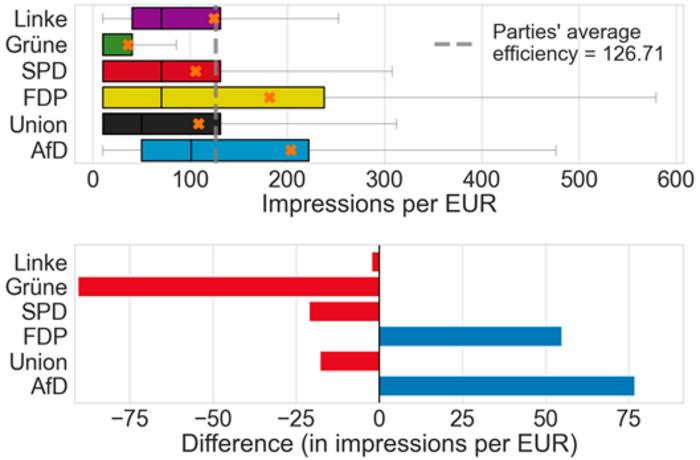A new study reveals that social media algorithms may be tipping the scales in political advertising, giving some parties a significant advantage over others.
Researchers from the Politecnico di Milano, LMU Munich, and CENTAI Turin analyzed over 80,000 political ads on Facebook and Instagram during the 2021 German federal elections. Their findings, published in PNAS Nexus, show stark differences in ad effectiveness across the political spectrum.
Uneven Playing Field in Digital Political Advertising
The study examined ads that generated more than 1.1 billion impressions in an election with over 60 million eligible voters. Researchers found that for the same budget, some parties’ ads were far more effective than others. The far-right Alternative for Germany (AfD) party stood out, with ads nearly six times more efficient than those of their competitors. On the other end of the spectrum, the Green Party’s ads were the least cost-effective.
Francesco Pierri, a researcher from the Politecnico di Milano who co-led the study, explains: “The greater success of their advertising could be explained by the fact that the incendiary political issues promoted by populist parties tend to attract a lot of attention on social media. Consequently, algorithms would favor campaign ads with such content.”
This discrepancy raises questions about fairness in digital political advertising. If algorithms consistently favor more extreme or controversial content, it could skew public discourse and potentially influence election outcomes.
Algorithmic Bias and Demographic Targeting
The study also uncovered mismatches between parties’ intended audiences and those actually reached by their ads. Most parties ended up reaching younger audiences than expected, while the opposite was true for far-right parties. The researchers suggest this might be due to algorithmic bias based on known voter behavior patterns.
“We see a systematic bias in how the political ads of different parties are distributed,” Pierri notes. “If they aim at a specific audience or send contradictory messages on political issues to different groups, this can limit the political participation of disadvantaged groups.”
This finding highlights the complex interplay between user data, algorithmic decision-making, and political messaging. It also underscores the need for greater transparency from social media platforms about how political ads are distributed and targeted.
Why it matters: The study’s findings have significant implications for democratic processes. If social media algorithms consistently favor certain political messages or parties, it could create an uneven playing field in elections. This could potentially influence voter opinions and behaviors in ways that are not immediately apparent to the public or regulators.
As digital platforms increasingly become the primary arena for political discourse and campaigning, understanding these algorithmic biases is crucial. The research adds weight to calls for increased oversight and transparency in political advertising on social media.
Looking ahead, this study opens up new avenues for research into the intersection of technology, politics, and public opinion. Future studies might explore how to create more equitable algorithms for political ad distribution or investigate the long-term effects of these biases on voter behavior and election outcomes.
As society grapples with these issues, the pressure on social media platforms to provide greater transparency and fairness in political advertising is likely to intensify. The EU’s Digital Services Act is one step in this direction, but the rapid evolution of digital technologies means that ongoing research and regulatory attention will be necessary to safeguard the integrity of democratic processes in the digital age.


